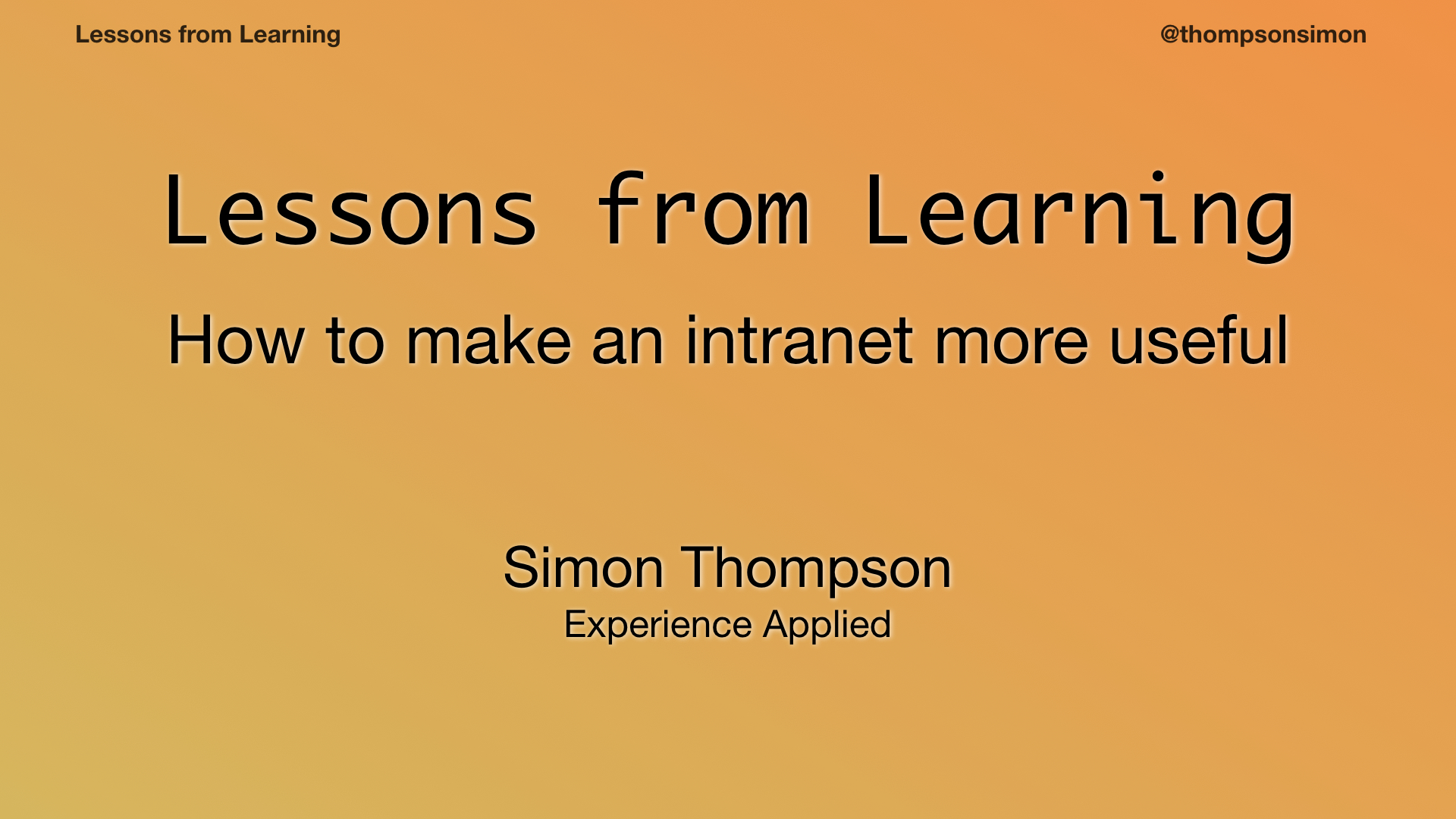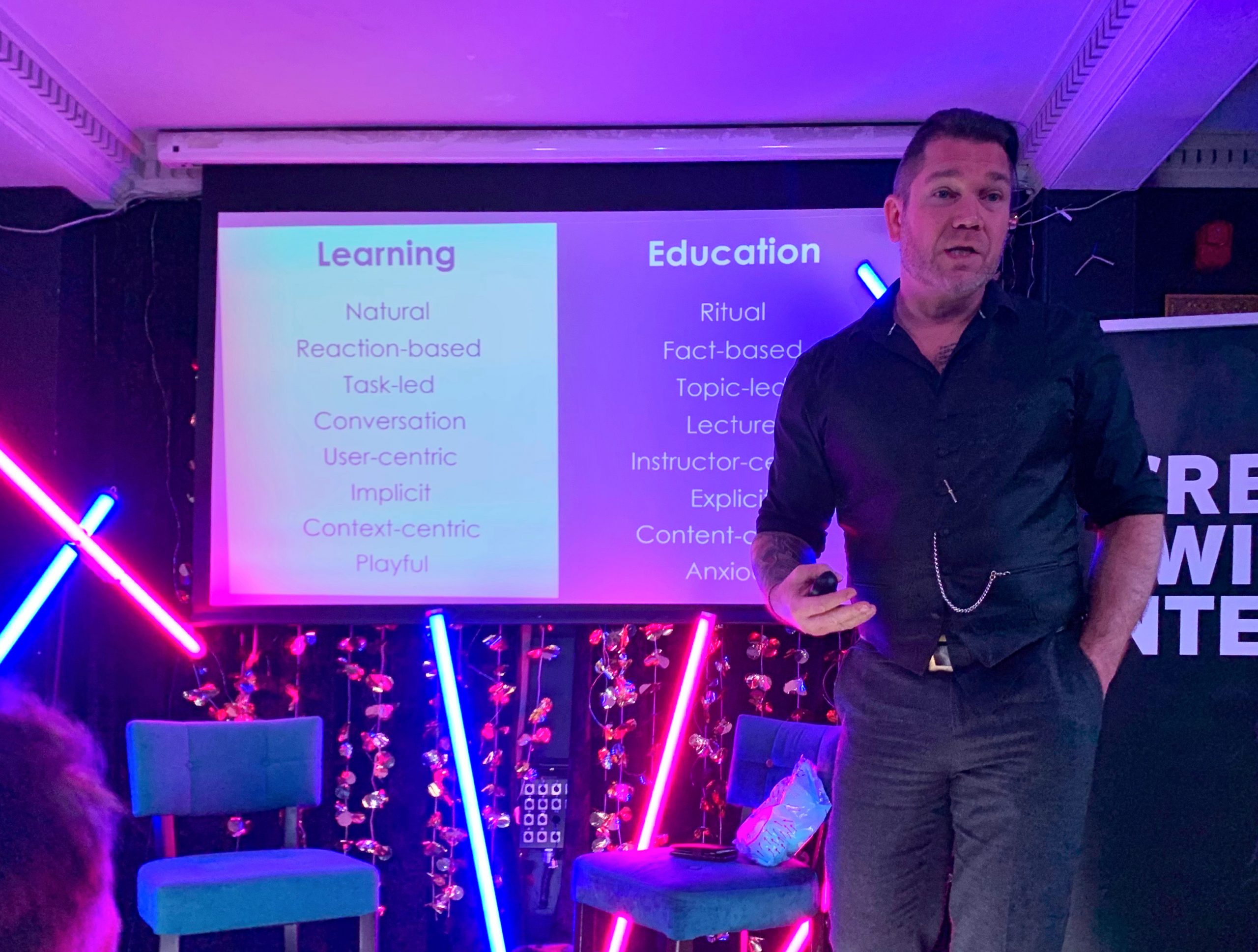Month: February 2020
-
Learning Technologies – a digital workplace perspective
Last week I got to spend a day and a half at the Learning Technologies exhibition in London, and had many interesting conversations. As I’ve commented before, learning tech feels like a strange parallel universe where intranets barely exist, so would this year’s show be different? Something borrowed, something blue There is a concern in…
Written by
-
Lessons from Learning – the post
In 2019, I was thrilled to be invited to present my talk Lessons in Learning to the IntraTeam conference in Copenhagen. This is a summary of the majority of the talk, where I argued that intranet professionals need to pay more attention to learning and development. This talk originates a year before at IntraTeam Event…
Written by
-
Everything you know about learning is wrong…and what might that mean?
Nick Shackleton-Jones is an entertaining and occasionally puckish speaker, and kept the Brighton audience for last night’s Tilt Talk on their toes with jokes, challenging questions, short activities and giant marshmallow-throwing. And that wasn’t just playfulness, but illustrating one of Nick’s key points about how people learn: that we are much more likely to remember…
Written by


